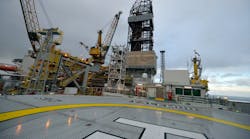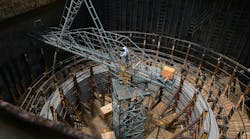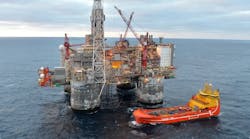Offshore staff
LONDON — EnQuest says plug and abandonment (P&A) campaigns are making good progress at two decommissioned fields in the UK central North Sea, with seven wells completed at Heather and a further seven at Thistle during the first half of this year.
The company expects to complete P&A of 23 wells—12 at Heather and 11 at Thistle—by year-end 2023.
Both facilities are on track to meet their post-cessation of production well P&A targets of 39 wells at Heather and 41 wells at Thistle by year-end 2024.
Elsewhere in the North Sea, EnQuest is drawing up plans to P&A 33 subsea wells at the Alma/Galia, Dons and Broom fields and aims to be in position to start the campaign next spring, with a rig commitment secured by the end of 2023.
In its latest results statement, it added that it had secured four carbon storage licenses in the northern UK North Sea covering storage sites in its Magnus and Thistle fields and the currently TAQA-operated Tern and Eider fields.
All the sites are said to be large, well characterized deep storage formations connected by existing infrastructure to the Sullom Voe Terminal (SVT) in Shetland. EnQuest is aiming to ship CO2 to SVT in liquid form to existing jetties, then transported via the existing East of Shetland pipeline for injection and permanent storage offshore.
A flexible shipped solution for carbon storage could attract emitter clusters elsewhere in the UK, Europe or farther that may lack local access to storage infrastructure. Potentially the project could store up to 10 MM metric tons/year of CO2, and there are further geological formations in this part of the North Sea that could be connected to SVT infrastructure in the future, with potential to store more than 1 billion metric tons of CO2.
09.05.2023










